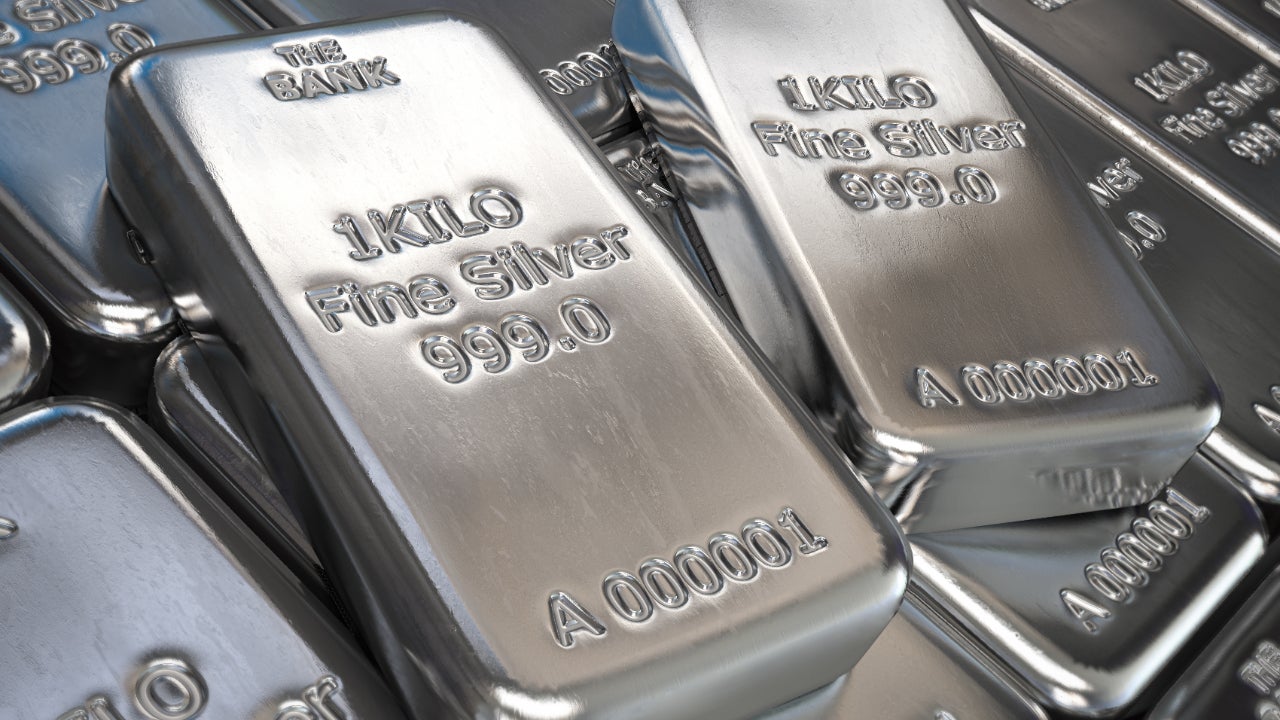How to invest in China: Largest stocks and key risks

Investing in China can offer the opportunity to find a highly attractive company growing in one of the world’s fastest-growing economies. Despite the potential for finding a hidden gem and riding it to a gain, investing in China also has plenty of drawbacks that investors should be aware of.
How to invest in China: Step-by-step guide
Investing in China is like investing in American stocks in many respects. You’ll need to find a broker, analyze the potential investments — including stocks and exchange-traded funds (ETFs) — and then fund your investment. But it also poses some of its own challenges and watchpoints.
1. Choose your online broker
You can get started with an online stock broker in a few minutes. The broker allows you to buy and sell stocks and other investments, while also holding those investments for you. It collects any dividends and interest paid by your investments. To open an account, you’ll need to provide some basic personal and financial information and then connect your bank account to transfer money.
Most brokers don’t charge any commission to trade stocks and ETFs, and many don’t charge commissions for thousands of mutual funds, either. Most brokers don’t have a minimum account size, so you can literally get started with nothing.
As you decide which broker makes sense for you, you could consider what features you need. If you’re looking to trade Chinese stocks listed on an American exchange, then the best brokers for beginners will do nicely. These brokers are also useful if you want to buy exchange-traded funds (ETFs) that hold Chinese stocks.
However, if you’re looking to buy Chinese stocks directly on a Chinese exchange, then you should consider turning to moomoo. This broker allows customers to trade Hong Kong stocks and China A-shares, both of which are a rarity for an American exchange. The broker lets you trade American stocks and funds, too, of course, and offers a number of other positives.
Note: Many Chinese stocks on American exchanges are typically in a legal form known as American depositary receipts (ADR) or American depositary shares (ADS). An ADR represents stock in the foreign country that is held by an American institution, which then issues the ADR to simplify the process of owning and trading the stock for American investors. An ADS is the actual share of the foreign company held by depositary institution and can be packaged into an ADR. Generally, the holder of an ADR can still vote in corporate elections and receive dividends.
2. Research and analyze stocks and funds
If you intend to buy individual stocks, you’ll need to research them and figure out which ones are good investments. This process can require a lot of work if you want to make money.
You’ll need to research the company, its products, its competitive position, the industry and the company’s financial position. That means reading its filings with the Securities and Exchange Commission (SEC). In addition, you can use the top strategies of the experts, including your own research, such as getting out to local stores to see how the company’s products are viewed.
Chinese stocks that are listed on a major U.S. exchange must also make quarterly and annual filings with the SEC, too, and they do so in English. That luxury may not be available if you trade stocks directly on a Chinese exchange, however.
Chinese stocks present some unusual risks, so it’s important to understand them. For example, many Chinese companies trading on U.S. exchanges have a complex ownership structure, using what are called variable interest entities (VIEs). This structure poses a significant risk to investors (more below). As of January 2024, 166 Chinese companies on major U.S. exchanges use the structure, and they account for 91 percent of the total market capitalization of Chinese firms on major exchanges, according to the U.S.-China Economic and Security Review Commission.
If you’re looking to trade funds, you can screen for high-performing ETFs on your broker’s site or using various online screeners. You should look for solid long-term performance and a low expense ratio so that you’re not paying a lot in annual fees to the fund company.
After researching the stock, you can decide whether it’s an attractive investment or not. When you find a stock or fund that meets your criteria for buying, note its ticker symbol, typically a three- or four-symbol code.
3. Figure out how much to invest
It’s time to decide how much to invest. If you’re just beginning to make trades, it’s important to know that you don’t need a lot of money. Many brokers allow you to purchase fractional shares, and often you can purchase as little as $5 of a stock, regardless of its price. The best brokers for fractional shares let you buy thousands of stocks and funds with pocket change.
But regardless of how much you purchase right now, you’ll build wealth over time by continuing to invest regularly. So figure out how much you can invest now and then how much you can invest over time. By adding to your investments over a longer time horizon, you’ll use the power of dollar-cost averaging to spread out your buying over time and reduce your risk.
If you’re investing a few thousand dollars or more, you should consider investing in multiple stocks, so you’re diversifying your investments and reducing your risk. However, funds typically hold dozens of investments, so they have some natural diversification and you may not need to purchase additional funds if you’re satisfied with one.
4. Place your trade
You have your stock or fund picked out and there’s money sitting in your brokerage account, so it’s time to place your trade. Using the ticker symbol, enter the order with your broker. You can specify which kind of order you want to place: a market order or a limit order.
- Market order: This order lets you trade shares for the best available price at the moment you send the order, whatever it is. So you won’t have full control over the price you buy or sell.
- Limit order: This order lets you name your price, and you’ll only trade at that price or better. If you can’t get your price, the trade won’t be executed.
Market orders are fine when you’re trading just a few shares of stock or the stock is larger and trades millions of shares a day. Limit orders are better for small stocks or when you’re putting in an order for hundreds of shares or more. In short, use a limit order if you think your purchase or sale of stock will move the stock price significantly.
Once your buy order is executed and settled, you own the stock.
5. Track your stock
Once you’ve purchased your stock, your journey has just begun. You’ll need to continue to track the company, looking at quarterly and annual earnings while also following what’s going on in the industry. As the company’s results improve, you can add more shares to your position, and later you can add more stocks or funds to your portfolio as your expertise improves.
Your stock may decline for any number of reasons, but that’s just part of investing. It could be a good time to buy more stock in the company or it may not be. If you’re tracking the company, your knowledge can help you decide whether it’s time to buy more, or even time to sell.
If you don’t want to do the legwork required to invest in individual stocks, consider buying a fund that invests in Chinese stocks (more below). Index funds may own dozens of stocks, and your return depends on the weighted average performance of the entire portfolio. You’ll get the benefit of diversification and won’t need to do all the research you’d need for individual stocks.
Here are some of the best American index funds.
Largest Chinese stocks trading on major American stock exchanges
Below are some of the largest Chinese companies (by market capitalization) trading on major American exchanges, not including those trading on the pink sheets.
| Company (ticker) | Market capitalization |
|---|---|
| PDD Holdings (PDD) | $199.6 billion |
| Alibaba Group (BABA) | $189.9 billion |
| NetEase (NTES) | $60.7 billion |
| JD.com (JD) | $45.3 billion |
| Baidu (BIDU) | $33.6 billion |
| Trip.com Group (TCOM) | $33.6 billion |
| Tencent Music Entertainment (TME) | $24.5 billion |
| Li Auto (LI) | $21.8 billion |
| KE Holdings (BEKE) | $19.3 billion |
| ZTO Express (ZTO) | $19.0 billion |
Source: Yahoo Finance, as of June 7, 2024
This list does not include some major Chinese companies such as Tencent Holdings (TCEHY), which has a market cap of $444 billion, because it doesn’t trade on a major exchange. It also doesn’t include YUM China (YUMC), a 2016 spinoff of YUM Brands that is focused on China but is fundamentally an American company operating in the Middle Kingdom.
If you don’t want to invest in individual stocks, then you can also consider purchasing an ETF, which can offer diversified exposure to China and lower overall risk compared to single stocks.
Largest China-focused ETFs
The list below includes the five largest China-focused ETFs (by assets under management) trading in the US, excluding any leveraged funds.
| Fund (ticker) | Assets under management | Expense ratio |
|---|---|---|
| KraneShares CSI China Internet ETF (KWEB) | $5.9 billion | 0.69% |
| iShares MSCI China ETF (MCHI) | $5.7 billion | 0.59% |
| iShares China Large-Cap ETF (FXI) | $4.8 billion | 0.74% |
| Xtrackers Harvest CSI 300 China A-Shares ETF (ASHR) | $2.0 billion | 0.65% |
| Invesco China Technology ETF (CQQQ) | $667 million | 0.65% |
Source: ETFDB.com, as of June 7, 2024
These funds offer a diversified selection of Chinese stocks, often with a thematic component to them. For example, the KraneShares CSI China Internet ETF focuses on web-related companies, while the iShares China Large-Cap ETF holds larger Chinese companies.
These funds are not especially large as funds go and the expense ratios are a little pricier than that of the average index fund, though still within reason.
Risks of investing in China
Investing in Chinese stocks comes with some significant risks, so investors will really want to pay attention to the following:
- Government intervention: The threat of government intervention into business is quite real, and the government and regulators may tell successful companies that they need to operate differently or otherwise risk significant penalties. It’s even possible that firms may be forced to pay special one-time taxes or other penalties.
- Murky ownership structures: Investors in Chinese companies need to pay attention to the corporate ownership structure, especially what are known as variable interest entities. A VIE may receive economic benefits from a Chinese company without actually owning the shares of that company, since Chinese regulations may prevent direct ownership of various companies. VIEs are typically registered offshore, often in the Cayman Islands, and the entity trading in the U.S. does not hold a direct interest in the Chinese company, only the offshore vehicle. Investors should be careful to understand exactly what they own, because it may not be as rock solid as they think.
- Geopolitical: Geopolitical concerns can be significant, including the possibility of China gaining control of Taiwan and the global response to that event.
- Accounting transparency: Accounting rules may not be as transparent as American investors are used to. For example, for nearly a decade, to 2022, the Chinese government stopped domestic auditors from complying with U.S. regulations on audit inspections, according to the U.S.-China Economic and Security Review Commission.
- Currency risks: Investing in a company that earns its profits primarily in another currency exposes investors to currency risk. If currencies move unfavorably, it could severely impair the profitability of the company in dollar terms and thus its stock price.
Of course, these risks are just the specific one related to China, and investors must consider the range of other risks as they would with any investment. They should consider the company’s competitive position, financial strength, management and many other factors.
Bottom line
China offers the potential for finding attractive investments, but American investors should pay careful attention to the risks involved when investing in Chinese stocks. These risks can be significant and can even affect investments that have fundamentally strong operations, solid growth and robust finances.
Editorial Disclaimer: All investors are advised to conduct their own independent research into investment strategies before making an investment decision. In addition, investors are advised that past investment product performance is no guarantee of future price appreciation.






